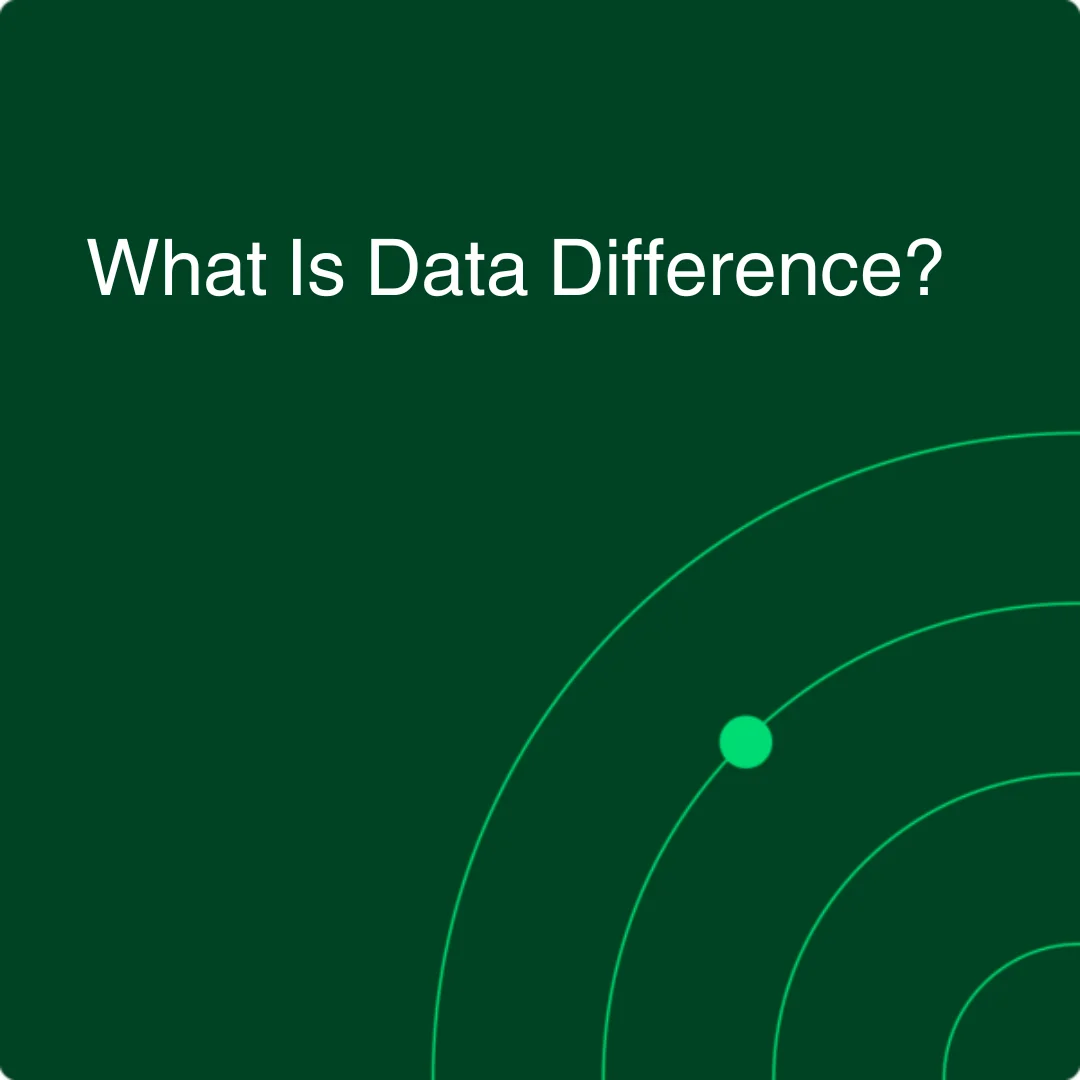Data difference: what is it and why do you need it?
Recognizing data differences is key to rectifying errors, enhancing data quality, and supporting effective data governance, especially when working with large datasets and diverse systems.

Data difference refers to discrepancies or variations found when comparing two sets of data. Issues like missing records, variations in record values, and schema changes are examples. Often identified too late, these inconsistencies can lead to increased costs and tedious remediation efforts. To bridge this gap, Telmai is introducing its innovative new Data difference feature, designed to automatically track inconsistencies in data movement, identify issues, and provide detailed insights into the differences in a machine-readable format. It can handle data of any scale, from megabytes to terabytes, and boasts over 250 integrations, facilitating data comparison across diverse systems and file formats to ensure data consistency.
Imagine an e-commerce company that manages vast amounts of data across multiple systems and regularly transfers customer information and order details across various systems like databases and cloud data warehouses. Any inconsistency in data movement—like an updated customer address not correctly reflected in the order processing system—can lead to significant issues, such as orders shipped to incorrect addresses. In such scenarios, ensuring data consistency by accurately tracking and rectifying data discrepancies becomes critical to maintaining operational efficiency and ensuring customer satisfaction.
How does data difference work?
First, users configure two data sources for comparison and define their relationship. These data sources can vary in type and source, such as one can be a CSV file and the other a DeltaLake source. Telmai will then scan these datasets, identify discrepancies, and report them. The report will include information on missing or new records, record value variations, and schema changes. The differences are then compiled into a downloadable file for review.
Check out the practical demonstration with a dataset from Kaggle that illustrates the feature’s effectiveness. The tool accurately identified the changes by modifying a duplicate dataset – deleting and altering records – and then running Telmai’s Data difference scan. Although the current version requires defining an ID attribute and prioritizes certain features, future enhancements are expected to expand its capabilities.
Elevate your data management from reactive correction to proactive quality

Ensuring accuracy and reliability in your data isn’t just a routine task—it’s about excellence in execution. Telmai doesn’t merely correct data anomalies; it proactively spots and isolates them early. This means the data coursing through your systems is dependable and consistent.
Are you prepared to not just control but master your data quality? Try Telmai today and discover how it can transform and streamline your data management process.
Passionate about data quality? Get expert insights and guides delivered straight to your inbox – click here to subscribe to our newsletter now.
- On this page
See what’s possible with Telmai
Request a demo to see the full power of Telmai’s data observability tool for yourself.
